
Happy Summer Everyone!!
Congrats to our Graduates!
CUNY York College – Digital Storytelling

Happy Summer Everyone!!
Congrats to our Graduates!

Here is the class recording from 5/7: Please Watch, especially if you were late or absent in class this week.
Here we are in the final 2 weeks of our Spring 2024 semester!
It is my intention to get things set up in advance to help and give everyone enough time to finish / revise assignments, catch up and feel confident about our course completion. Most of us will be focusing simultaneously on finishing our website building project, as well as populating the website with blog posts and content, while others may be retroactively catching up on or revising blogging assignments and commenting.

Please e-mail me with any questions at – rseslow@york.cuny.edu
Please know, I am always here to help in anyway that I can. Please don’t hesitate to reach out to me. Please know, it is not too late to catch up if you are a bit or even far behind. We can work together but I need communication in order to help.
**The last day of regular CT101 classes is Tuesday May 14th..
All of our class sessions and assignments have video tutorials that are recorded and added to the weekly blog post assignments on our class calendar page here.
**All course work must be completed and published no later than Wednesday May 22nd at 6pm – that is the absolute deadline.
**Please read all of the information below carefully & mark your calendars**
Please make sure that you follow each step below – it is really important to illustrate each retained skill and the ability to follow the guidelines below.
*Each student will write and publish a Final Course Reflection Blog Post.
Students will publish the Final Post to the CT101 website.
Students will kindly e-mail the direct link of your final blog post to me – rseslow@york.cuny.edu – no later than Wednesday May 22nd at 6pm and NOT before Tuesday May 14th.
***Please do not publish or e-mail the final blog post link to me before Tuesday May 14th.. This post and submission process is to be done during final exams week and serves as our final exam.***
*The e-mail subject of your final blog post will say: “CT101 Final Blog Post/Your First & Last Name”
I will confirm your e-mail by replying “Received” once I receive it.
Here is an example below for finding a blog post’s direct URL – (this is the direct link to the text you see at the moment in the web browser address bar at the top of the browser) The post must be published in order to copy it and paste it into your e-mail to me – it would look something like this below.
*Your final blog post is Mandatory, it serves as our final exam and final project and it must include ALL of the information stated below:
Your final blog post will be a detailed narrative and re-cap of what you have learned in CT101, and a reflection and assessment of what grade you have earned in our class and why you deserve that grade? (Yes, you must include this part, it is mandatory).
What did you enjoy about our class and how will you apply your new skills into the world?
You learned how to build a website, will you maintain and keep up your new website? If so, how? If not, Why not?
Your final blog post should include a culmination of supporting images, GIFs, videos and hyperlinks to all of your existing published blog posts.
(pro-tip – you have already had practice with the mid-semester assessment post, think about this as “part 2 ” to that post)
Please let this post display the best of your skills sets learned and applied!
*Final Website Link & Description – As a part of the final blog post each student will be sharing their new website URL (your domain name) it must be hyperlinked and you will give a clear descriptive tour of their website and share how the website is being used. Plus, share thoughts on your website building successes, frustrations and an over-all assessment of building and having a website. You must include a screen shot of each page on your website to support your website tour. Your website must be free of ALL default WordPress content that came with the initial theme and must have at least 2-3 published blog posts, 3-4 pages and should display a clear visual customization from the default template.
****It is Not Mandatory, but if you would like the opportunity to visually present your final blog post & website to me in person during final exams week – please meet me on Tuesday May 21st @ 10am in our classroom
*The Final Blog Post submission requirements as stated above are Mandatory, please let me know if you have any questions.
All questions should be sent to – rseslow@york.cuny.edu
Im here to help!


Welcome Back!!
Here is the class recording from 4/16:
Assignment #10 – > (details below)
This week in CT101 we will be focusing on getting everyone set-up with their new websites! The coupon code that you need was shared last week in class and or to your York college e-mail address by request (please e-mail me if you still need it).
By now, many of you got started, you have a new domain name, a web hosting account, and a blank / default website framework ready to be customized and stylized!
I’ll be helping here with the customizing process of WordPress. This part will have multiple aspects to it.
There is a lot to share, create, experiment with and test!
The process is fun and will take a few weeks as you make several aesthetic and functionality decisions about how you would like your website to look.
This will all play out in context to “how” you plan to use your new website. Not only as a new site owner, but looking into the future as well.
So, how will you be using your new website?

Assignment #10 –
This week let’s dig into some of the customizing features that WordPress offers as we begin to design our new websites.
What will you work on first? Will you create a series of new pages? Will you remove default content from your theme? Customize the home page? Publish a blog post? Will you create a category or two? Add plug-ins? Changes colors?
Let’s publish a NEW blog post that shares a narrative statement about your process and discoveries, as well as HOW you will be using your new website as we go forward. You can publish this post on the CT101 class site. Please don’t forget to embed various pieces of media (images, screenshots, gifs, hyperlinks) and also share contextual content to help expand your post.
**For example, there are many video tutorials on YouTube that share “how-to” videos for beginners, or customizing videos for the theme that you will be using, this is context 🙂
I will continue to make and record class videos and also share some helpful curated content from the Internet. We will be discussing HOW we will all be using our websites individually, just to mention again 🙂
But WAIT! You cant do anything above unless you have done this: -> Domain Name Registration, Hosting Set Up & WordPress Installation! <— Please read this important post to get started! (from last week)

WordPress themes are extremely versatile and are great for WordPress newbies and beginners. I highly suggest that you consider using the theme that I share. All themes are different, and many of them out there promoted on the Internet are not free (plus, its always helpful to start with a theme that has a good amount of video documentation that already exists.)
More to come!
PLEASE E-MAIL me and say hello, let me know how I can help you! rseslow@york.cuny.ed

**Please read through this post carefully – it contains several steps and pieces of information.
***Here is the class recording from 4/9/24 – please watch –
“The Journey Begins!”
*Individual student Coupon Codes for the domain name & web hosting set up will be shared in class on 4/9 – if you miss class, it will be e-mailed to you- be sure to check your York college e-mail address to get the code if you miss class (if you do not receive the code on the day that your class meets this week please e-mail me to let me know) –
The coupon code can only be used 1 time – please do not attempt to use it twice.

We began talking about Domain Names and what role they play in creating a digital identity on the web (and as a part of this class.) If you missed that post, please be sure to check out our course schedule page under week #9 as it has context and will help make this next step a bit smoother.
This week we are going to get started!
We are going to begin the process of registering a domain name and also setting up web hosting, which will allow you to put files up online that will be discoverable through your new domain name! We are going to use a form of ‘shared hosting’ where you get a portion of a server – think of it as having an apartment in a building. With this shared hosting you will be able to do a lot of things including installing your own instance of WordPress (**remember, this is NOT wordpress.com but the open source version of wordpress.org) so that you can start building your website for your domain name. I will walk you through the steps that are needed, please follow my exact steps.
We use a company called Reclaim Hosting, with which we have a contract with so you will enter a coupon code and start your account for free.
We chose this hosting company because they have a lot of experience working with students just like you, that are likely getting their first domain name and web hosting account. You will be creating an account just like you would with any online vendor with which you want to purchase something. So it’s not a ‘CUNY’ account, we’re just giving you the coupon code to pay for the year’s service. The service will last for 1 year.
You do not need to pay for anything, so please reach out if you have questions – rseslow@york.cuny.edu

With that said, you will need to provide a name, address, and phone number. Lets go to this sign-up page <— to get started with the domain name selection process.

1. First you will need to pick your domain name, make sure that it is available and make your selection to proceed. (I suggest sticking with the .com or .net extensions)

2. On the next page, check the ‘add ID protection box.’

3. On the next page you should see two items in your cart and a price of $45 with ID protection, you will then enter the needed information for your new account and provided the coupon code and validate it. (you will NOT be charged for this, its already included in the course.)
After you fill in your personal information, and select the payment “Invoice Only” option. (again, you will not be charged anything.)
6. Click the “Complete Order” button and allow for the transaction to go through. Please check your e-mail for your account information and a verification of your e-mail link. With your new account information, log-on to Reclaiming Hosting.
Shortly after setting up your account and registering your domain you must verify your account via e-mail by clicking on the link they send to you. (be on the look out for a series of e-mails from Reclaim Hosting)
7. YOU ARE NOW ALL SET AND READY TO START WORKING WITH YOUR NEW DOMAIN NAME AND WEB HOSTING ACCOUNT!
8. It’s now TIME TO INSTALL WORDPRESS. – I will begin the set up installation – You can refer to the video recording posted after class and follow the step by step guide to install WordPress correctly.
**********************************
**********************************
Assignment #9 – (you must complete part 1 before moving on to part 2 – After following along in our class this week and reregistering your domain name, setting up your web hosting account & installing WordPress – please publish a detailed blog post about the overall experience of registering your own domain, and setting up your web hosting account. Be sure to include screenshots, images, videos and hyperlinks for context. (as always)


It’s Time to Pick a Domain Name! Well, lets get thinking about it!
Here is the class recording from 3/26/24:
It’s time to begin thinking about choosing a domain name that can represent your digital self! <– (we will watch this video in class together)
Its time to start planning the website building aspect of this course! YES, we will be designing a website, no doe is required, this will be a visual front-end design project, trust me, its FUN!
Exciting? It is indeed! But first, what is a domain?
You can’t (and shouldn’t) pick just anything..
This part is important!
It has to be unique! And it also has to be available!
It should be relevant – it could be based on your real name,
Or a nickname and or something meaningful to you!
You will need to search for its availability using a domain registrar and you can pick from a number of different ‘top level domains (TLD)’ – for example .com, .net, .us, and .org – then you can have an example like – “mypersonalsite.net”
As we go forward to select and register our domain names, you’re also going to need web hosting, which will allow you to put files up online and will be discoverable through your new domain name! We are going to use a form of ‘shared hosting’ where you get a portion of a server – think of it as having an apartment in a building..
With shared hosting you will be able to do a lot of things including installing your own instance of WordPress! (via WordPress.org and not wordpress.com – they are a lil’ different) With WordPress installed you can then start building your website for your domain name. I will cover a series of demonstrations on how to do this and I will record all of the demonstrations and tutorials.

But, what exactly is Web Hosting?
We use a company called Reclaim Hosting, with which we have a contract with so you can enter a coupon code and start your account for free.
**The coupon code will be e-emailed to everyone via blackboard starting next week and the week after – so I will be reminding you to check your York college e-mail address to get the code.
******************************************
**Assignment #7
Please shares a few of the potential domain names that you would consider using for the new website that you will soon build. List them (at least 5-10 potential names) and say a few words about why they would be good examples for the website that you will build.
Let’s also speculate:
What might your new website be about?
This part is totally up to you! If you wish, you can use the website project itself for a specific niche project, for example, perhaps you want to share your passion for cooking and poetry. Which means you will be primarily writing blog posts about cooking and poetry while building the website simultaneously. This can also be applied to sports, or gaming, or politics or journalism, or simply put, website that fused together many interests as well as your ct101 assignments.
Share your thoughts, excitements, fears and any other sentiments about how you are feeling about this next chapter in your life as a website owner!
Please apply all of the existing blogging skills that you have developed and include a few images, GIFs, memes and hyperlinks. Also – lets add a few screen shots of some of your favorite existing websites, let us know why you like them!

Wow, here we are at the midpoint of our CT-101 semester! Time… goes by waaaaaay too fast.. Let’s take a minute to reflect, let’s take a minute to regroup, catch up, let’s induce a class reflection!
Let us ask ourselves the following questions, and reflect:
“How am I doing in CT101? What have I learned? What new skills have I developed, cultivated and displayed regularly? How do I assess my performance through a self-reflection in this class?”
**PS – in person attendance in this class is mandatory and counts towards your final grade. Please be accountable for any absences.**
The assessment part is very tangible and clear as we have been producing results over the last 7.5 weeks in the form of blogging, commenting, creating visual imagery, discussion via various forms and class participation.
Let’s take stock, follow me below:
The CT 101 Course Schedule page is where everything is – this is the CT 101 HUB – this is the space where all the assignments and learning details take form each week – (just in case you forgot) – this is where you can recap and catch up on all assignments (and also access all of the class recordings) – https://ct101.commons.gc.cuny.edu/course-schedule/

In fact, before we move into the next phase of our course, I want to take a week and reflect upon what has already been accomplished, as well as take accountability for what might be missing and in need of improvement.

Let’s title this next post:
Assignment #6 – The Mid-Semester Reflection Post
In a new blog post titled:
“Assignment #6 – The Mid-Semester Reflection”, please assess and reflect upon your last 7.5 weeks here in CT 101.
**Please answer and address the following questions below, and also provide hyperlinks back to all of your previous completed blog posts.
This will help illustrate some of the questions below as you tell a compelling story here in the CT 101 blog space: (the use of imagery, media and hyperlinks are helpful and needed but please don’t default to using too many GIFs or memes to fill in all the gaps.)
How am I doing in CT101?
What have I learned and retained the most?
What new skills have I developed , cultivated and displayed regularly in my weekly posts?
What do I know now that I did not know before taking this class?
What grade do I believe I am maintaining and why do I deserve that grade?
Do I see my weekly blogging work expanding creatively? If so, please explain why – or am I stuck in a loop where my posts seem to look the same most of the time, how will I change that?
Are there any assignments that you are missing? If so, list them.
Are you commenting regularly on your classmates posts? Are you responding back to comments given to you by the professor & your classmates?
Are you participating during the class time? If not, explain why.
This is the time to be accountable. How will you make needed improvements?
**PS reminder #2 – in person attendance in this class is mandatory and counts towards your final grade. Please be accountable for any absences.**

Have fun with this!
Feel free to include useful relatedness in the form of links, images, video or Make Something New to express how you feel about this post! (a technique learned from the dS106 assignment bank perhaps?)
***Next week we will begin talking about Domain Names and Web Design!

There is A LOT of CT101 Digital Storytelling Project Flexibility..
Professor Michael Smith introduced me to the DS106 Assignment Repository many many years ago..
I am glad that he did!

Now that we are getting comfortable with publishing blog posts to our class website, embedding media like images, GIFS, memes, videos and hyperlinks, it’s time to push things further with content creation and deciding on how you will go about it.
Prof. Smith wrote the following in a blog post from a previous semester;
“In CT-101 you will have the opportunity to create many, many different pieces of media throughout the semester. Inspiration for these projects can come from a number of places. Two great websites that inspired this class and are hosted by a digital storytelling class at the University of Mary Washington.
One, is their ds106 assignment repository which has project prompts that are categorized by a variety of media types (visual, design, audio, video, mashup, writing, fanfic, and animated gifs). Visitors can browse through and sort by most examples completed, most viewed, newest, and more..
The second, is also a site known as the daily create which gives a daily project prompt to “make something” using various types of media.
Finally, you, yourself can also find a particular website that has a media piece and/or project type of interest to you – Tumblr and/or Reddit can be fun for this – Photoshop Battles is a favorite of mine.
Do you know of one? If so, share that link here!

In a New Blog Post this Week – Let us address and execute the following:
Browse through the mentioned websites above (ds106 & daily create) and find two projects that you think you would like to do.
1.One that you believe you already have the skills to do – or you believe you could figure out on your own.
2. And another (hopefully of a different media type) you don’t know how to do yet and would like to learn.
Working from the DS106 site, the Daily Create site or otherness – select, describe and hyperlink to two assignments/project ideas and tell us why you’ve chosen them. What do you think you’d need learn to complete them? How many of these kinds of projects do you think you should be doing in this semester so that you might learn and build both emergent storytelling skills and use new tools to create them? Why do you think these skills are or are not important?
Be sure to narrate your steps and support your descriptions with screen shots of the process. Be sure to actually complete one of the assignments and add it into your blog post.
***Please pay attention to proper blogging formatting – this post is an example of the necessary amount of embedded media types and written text to support the process.

***Also, be sure to leave a comment or two on one or more of your classmate’s blog posts!

Below – Photopea.com is a great web browser based image editing and manipulation tool – much like a watered down version of photoshop but it has great immediate creative power – we will discuss and share some ways that photopea can come in handy for this assignment
Here is a great video tutorial for HOW to use and work with photopea – its easy and super fun to work along side of, Im excited to see what you will do!
Have fun and reach out of you need help or have questions, you add your questions to the comments section below!

Welcome Back!
Here is the class recording from Tuesday 3/5:
OK – its time to dig into a bit of history as we continue practicing, learning and experimenting with our new blogging skills. As you can see, it takes practice, time, revision and also patience.
*Remember, my posts are also examples of the formatting and things that we should include in each post 🙂
(Images, GIFS, Memes, Hyperlinks, Videos – can be made, shared and embedded here)
Let’s dig in ->
Blogging and digital storytelling are two concepts that have been intertwined since the rise of the internet,
Blogging, refers to the practice of writing online, where people share their thoughts, opinions, and experiences through personal or professional platforms.
Digital storytelling, on the other hand, involves using digital media to create and share stories through a combination of images, text, and multimedia.
This week, we will explore a bit of the history of blogging and digital storytelling. I’ll provide a few common case study examples, and offer a fun activity for students to express their passions!
(The assignment details are below)

The origins of blogging can be traced back to the early 1990s when the first personal blogs began to appear on the internet. These early blogs were simple online journals where people would share their daily lives and thoughts with others. However, it wasn’t until the late 1990s and early 2000s that blogging became more mainstream.
The rise of blogging can be attributed to the introduction of platforms such as LiveJournal, Blogger, and WordPress (thats Us!). These platforms made it easier for people to create and publish their own blogs. As a result, blogging became more accessible to the masses, and people from all walks of life began to create their own blogs to share their thoughts and experiences with the world.
In the early days of blogging, most blogs were personal in nature. People would share their thoughts and opinions on various topics, such as politics, entertainment, and personal relationships. However, as blogging grew in popularity, businesses and organizations also began to use blogs as a way to connect with their audience.
Today, blogging has become an essential part of digital marketing. Many businesses and organizations use blogs to provide valuable information to their customers and to establish themselves as experts in their industry. Blogging has also become an excellent way for individuals to build their personal brand and to showcase their expertise on a particular subject.
(a brief history of the Internet – 1st Meme / 1st GIF – this is context!)
Case Study Examples of Blogging:
2. Mashable: Mashable is a news and entertainment website that covers topics related to technology, social media, and digital culture. The site was founded in 2005 by Pete Cashmore, who began by writing blog posts about social media news and trends. Today, Mashable is one of the most popular websites on the internet, with over 45 million monthly visitors. The site has also expanded to include video content and social media accounts on various platforms. Mashable was acquired by Ziff Davis for $50M on Dec 5, 2017
3. Huffington Post: The Huffington Post was launched in 2005 by Arianna Huffington as a liberal news and commentary website. The site quickly became popular and was acquired by AOL in 2011. Today, the Huffington Post covers a wide range of topics, including politics, entertainment, and lifestyle. The site has won numerous awards and is considered one of the most influential news websites on the internet.
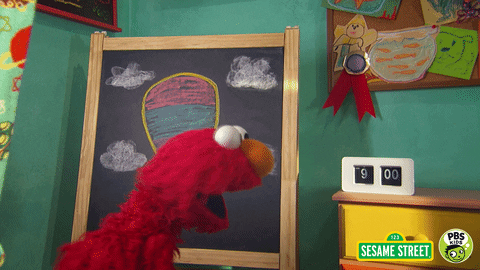
The concept of digital storytelling emerged in the 1990s, and it involves using digital media to create and share stories. Digital storytelling can be used for a wide range of purposes, including entertainment, education, marketing, and advocacy.
Digital storytelling typically involves combining different forms of media, such as images, text, audio, and video, to create a cohesive narrative. The end result is a powerful and engaging story that can be shared with a wide audience.
One of the most significant advantages of digital storytelling is that it allows people to share their stories in a way that is more immersive and interactive than traditional storytelling methods. Digital stories can be viewed on a range of devices, including smartphones, tablets, and computers, and can be shared on social media platforms or personal websites.
Over the years, digital storytelling has become more accessible to the general public, thanks to the development of tools and software that make it easier to create and share digital stories. This has led to an increase in the use of digital storytelling in education, where it is used as a way to teach students how to express their thoughts and ideas in a creative and engaging way.

Case Study Examples of Digital Storytelling:
2. The New York Times: The New York Times has been a leading source of news and information for over a century. In recent years, the publication has embraced digital storytelling as a way to engage its audience and provide more immersive and interactive content. The Times has used a range of digital storytelling techniques, including interactive graphics, virtual reality experiences, and multimedia features, to tell compelling stories that resonate with readers.
3. National Geographic: National Geographic is a well-known brand that is synonymous with photography and storytelling. The publication has embraced digital storytelling as a way to reach a wider audience and to provide a more immersive and interactive experience. National Geographic uses a range of digital storytelling techniques, including photo essays, videos, and interactive features, to share stories about the natural world and the people who inhabit it.

A great way to practice and apply your new blogging experiences is through self-expression! What are your passions? What are you passionate about in this world?
Create a new “digital story” by crafting a new blog post about what you are passionate about!
To get started, 1st, you should first choose a topic that you are in fact passionate about! Perhaps it’s a hobby? Sport? Creative expression? A political or social issue? Baking? … etc,
But, What is a Passion? <– READ THIS
2nd, then you should gather images, videos, and other multimedia elements that relate to your passions. This could include images, photos, drawings, audio recordings, GIFS, memes & videos. These things will help give “Context” to your storytelling and help others make a connection and stay engaged.
3rd, Write! Describe your passion(s)! Share your personal stories and reflections! How did you get introduced to your passion(s) -details details details!? Let your personality flow through your post!
And don’t forget to add hyperlinks!
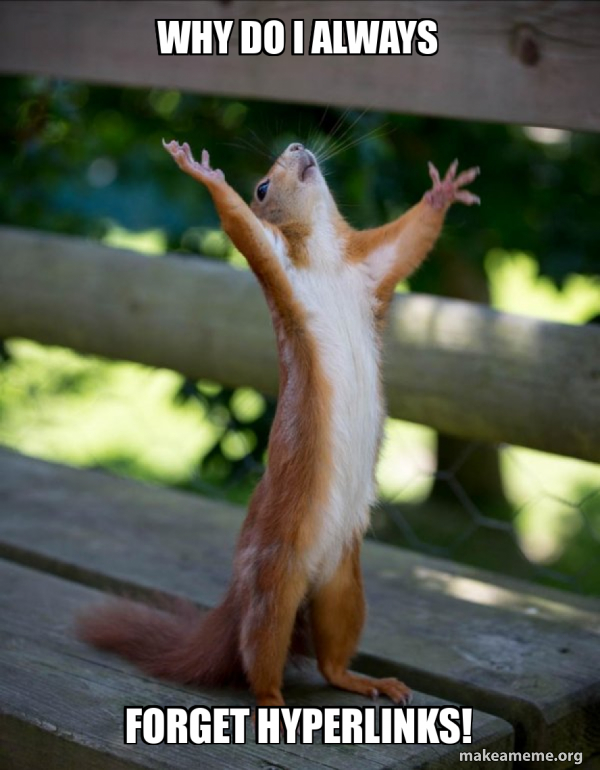
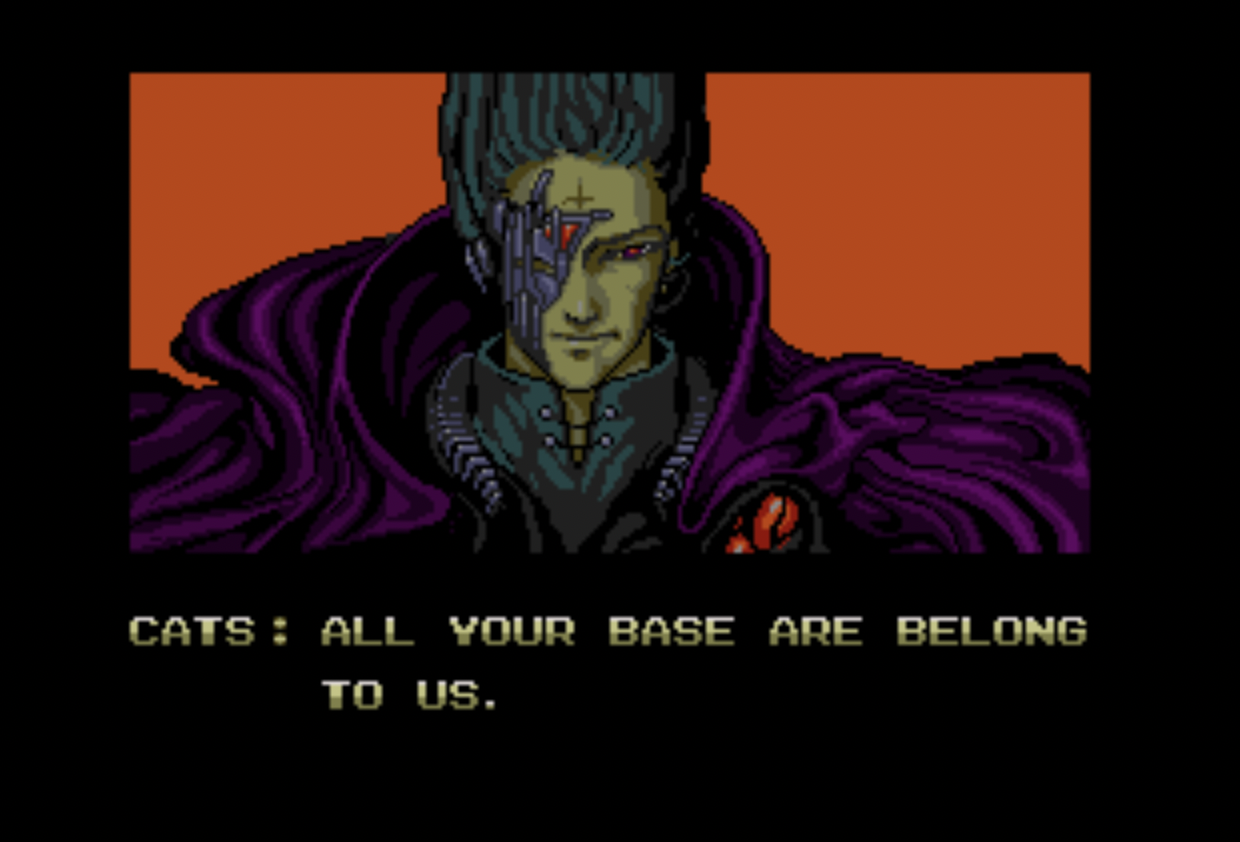
Let’s discuss!
You know that you want to!
Here is the class recording from 2/27:
First – lets screen the video above together and then later read the hyperlinked articles below for more context. (hint hint – > You should re-watch this video outside of class and reference it in your blog post 🙂
Second – The Assignment #3 Details: A New Blog Post is in order!
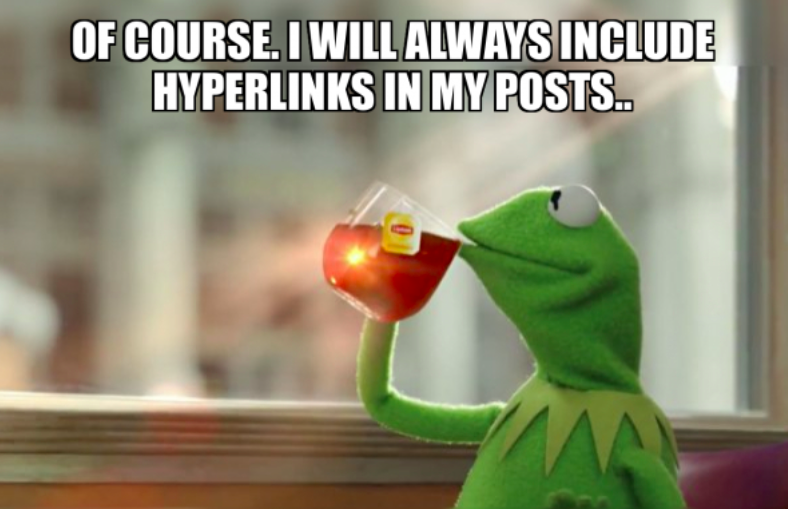
Memes have become an integral part of the online world, with new memes constantly popping up on social media platforms like Reddit, Tik Tok, Twitter (X), Facebook, and Instagram. But where did these funny images and phrases come from, and how did they become such a popular form of communication? Let’s explore the history of memes and how they have evolved into a unique form of internet communication.
The origins of the modern-day meme can be traced back to the early days of the internet. In the late 1990s, internet users began sharing images and text that had been altered or repurposed in a humorous way. These early memes were often created by hand and circulated on message boards and email chains. The first memes were simple and crude, but they paved the way for the more complex and sophisticated memes we see today.

One of the first internet memes to gain widespread popularity was the “Dancing Baby” in 1996. The Dancing Baby was a 3D animation of a baby that appeared in a television show called “Ally McBeal.” The animation was manipulated and turned into a looping GIF that was shared online. The Dancing Baby became a viral sensation, and its popularity sparked the creation of other memes like “All Your Base Are Belong to Us”
Over the years, memes have evolved into a complex and multifaceted form of communication. Today, memes are often used to convey complex emotions, comment on current events, and even express political views.
Memes are a way for people to connect and communicate online, and they often reflect the cultural and social trends of the moment.
One of the most fascinating aspects of memes is the way they spread and evolve. Memes are often created by one person, but they can quickly be adopted and transformed by others. Memes can go through a process of evolution as they are shared and re-shared, with each iteration adding new layers of meaning and humor.

Let’s write a new blog post ->
***be sure to re-read the FULL assignment criteria and work along side of it to make sure that you are including all aspects of the assignment***
Start by doing an Internet search for; “Are memes ART?”
See what you discover, gather those website links and share them in your new post. (at least 2-3 should be fairly easy to find)
No matter how you cut it, memes are here to stay… but is this good or bad for Art? Is this good or bad for communication? Are memes simply just forms of self-expression? Or are they MORE? Well, why or why not? I want to know what you think.
Can MEMEs be used for storytelling? If so, How? Explain how they are used in your experience here on the Web. Back up your answers with MEMEs and a statement.
Let’s create a compelling way to share our responses! Remember to pay attention to the good blogging skills list example in last week’s post?
And by all means plan to create, search for, discover and share your favorite existing Memes via an image or URL, or embed them into your new blog post for this coming week. You must share at least 3 of your favorite all time MEMEs in this post.
How will you craft a narrative between using Memes and your own personal experiences?
**Oh, and, you MUST create at least 2-4 of your own memes to express your sentiments for our CT101 class! Be sure to include the words: “CT101” in your meme!
Perhaps, you will say “CT101 be like…”
OR, “What if I told you that CT101….”
All of this nestles quite well into in new Blog post! Please consider the formatting of this blog post that you are reading right now. Notice how we see a mixture of images, video and hyperlinks that help give context and reference to where we are drawing resources from.

Giphy.com – (create a free account)
Imgur.com – (create a free account)
Make a Meme – work with some of the Internet’s classic templates
Are there others that you know of? Please share them in your post!
Read the articles below and be sure to reference them for context in your post!
Thrillist top 100 memes of all time
A good synopsis via how-to-geek.com
Are Memes the Pop Culture Art of our Era? Kate Knibbs

(I know, I know, its a dream come true assignment!)
Have fun!


Assignment #2
Here is the class recording from 2/20:
Exciting Times!
Let’s make some GIFS and explore their history, contexts and the potentials of this Internet culture sensation! GIFs are obviously here to stay! How far will they go? Can you tell a story with GIFs?
Some of you have already applied some great GIFS to your posts from last week!

But First, and Importantly:
What makes a successful, compelling and engaging Blog Post?
You can certainly see my examples, but now, you have a contrast and a result to work from now that we have published our first assignment (did you publish assignment #1?), looking back, did you cover all of these aspects listed below? (you can always edit and update your existing posts, I highly encourage it! And make sure that you are responding to your comments!)

Good Blogging is:
(You can click on the images above and they will re-direct you to their websites. I did this by selecting the “custom URL” option in the media / image uploading specifications area in the blogging editor and added the URL – watch my demo)
Imgur and Giphy are great platforms to explore and create GIFS with!
They both have a HUGE repository to choose from! In our class this week let’s check out both of these platforms in a series of video tutorials, both Imgur & Giphy are free to use and work with. (I encourage you to sign up for your own account, both are free) Let’s experiment with both platforms this week as we work on this week’s new assignment blog post.
Be sure to share your thoughts on what you think about both platforms, did one work better for you? If so, what were those features?

Let’s publish a NEW BLOG POST of your own and be sure to comment on one or two of your Classmate’s GIF Posts too!
Create a NEW blog post on our class website and embed a series of new Reaction GIF s that narrates your feelings about our CT101 class so far!
Let’s get creative, how can you tell your story in GIFs so far? Hmm?
Think about these questions, and answer them:
What did you think on the first day of the CT101?
Did you like hearing about the course and its creative content? How did it make you feel?
How does CT101 compare to some of your other classes so far?
What are the creative potentials of this class?
How do you feel about learning new skills that use Internet tools?

(yes, you can make this post as long you wish and make it flow like a story – This assignment description that you are reading is also a BLOG post example of the assignment!)
***Each reaction GIF that you use should be accompanied by a sentence or two or three of verbiage to help describe the GIF and narrative you are communicating.

Here is an example of me responding in GIF expressing the above GIF:
“Demonstrations and examples will be shared and executed during our class time, don’t miss it!” (and if you do miss it, I’ll post the video tutorial from class here below) Sinister audio fades in and out as Skeletor mercilessly GIFs himself into oblivion!
**PS – Here is a handy tutorial on how to make a GIF from a YouTube URL using Imgur from Prof. Smith a few years back – My first GIF post

The battle continues!
Oh, wait, you cant possible publish your new post without referencing and discovering some GIF history! How will you incorporate it into your new post?

Here is the WIKI for the GIF file format – its a good read.
Smithsonian – History of the GIF
A good article for WIRED on the 30th Birthday of the GIF
GIF History via – VOX

Let’s get started!
**And be sure to also comment on one of your Classmate’s GIF Posts!
Let’s Do it!

Assignment #1 – Example Fun with Ryan
Here we are in the Spring semester of 2024. I have a particular love for teaching CT101 at York College!
“CT” is short for Communications Technology, and the course is called “Digital Storytelling”.. (I know, the name of the course says it all!) It has quite a bit of history and I will share more on its origins soon. CT101 makes me happy. CT101 takes place on the Internet!
I love this class because it can literally help and inspire everyone. There is something here that everyone can learn and benefit from while also helping others evolve collectively. I say and mean everyone because lets face it, “we” spend a lot of time using the Internet..
Its a relationship, really!
We can all benefit from learning new digital tools, techniques, applications of self-expression and participating in a cross CUNY community here on the commons. (Which is a piece of the Internet that makes me happy! Oh I already said that..) CT101 puts an emphasis on creating and publishing content to a class blog whilst experimenting with what the potentials of “what a blog post can be”…
This also makes me happy. WordPress makes me happy!

What is making you happy on the Internet this Week?
So here we are, officially jumping into CT101 this second week. We have a ton of great stuff to cover, learn, share, create, apply, rinse and repeat this semester!
Assignment #1 asks us to share; What is making you happy on the Internet? We can do cool things like hyperlink text and verbiage.. We can make an image or ten, an animated GIF like the one above and below – also a “clickable thing” that redirects to another page or place on the Internet. That IDEA in and or itself makes me very happy! So in essence, the creative and practical functionality of the Internet as a whole makes me really happy.
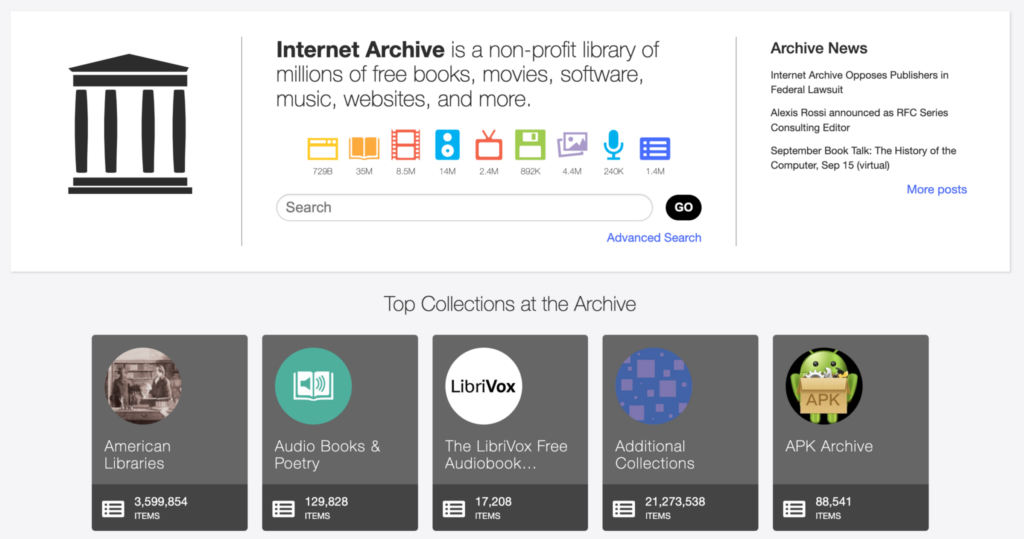
The Internet archive makes me happy too! (did you know about this?) Jump in and go waaaaaaay down the Internet cultural rabbit hole! The Internet Archive is a cultural repository of “stuff and things” that have been shared and published on the Internet! I especially like the Way back web machine to examine what websites looked like back in the early days! Especially some of the top brands that are synonymous with the Internet as we know it. This kind of research ability gives me a ton of creative ideas!
Lets dig a bit deeper..

The GIF above is taken from my profile on GIPHY. (go ahead and click on the image of the hyperlinked word to find my “stock” of animated GIFS. You can use them and embed them almost anywhere on the web. Thats the beauty of GIPHY.com – its a search engine for animated GIFs and animated Stickers, like I said, its Internet culture and Internet culture makes me happy! Website’s like Giphy have a lot of utility, they give us the opportunity to share our emotions and feelings through looping visual imagery. This helps me express myself in so many ways. Giphy.com makes me happy this week!
I love to make animated GIFS! And guess what, you are going to learn how to make them in our class! I love GIFs and I feel that they are a huge part of Internet culture. Come on now, we all love animated GIFS! I made most of the GIFs in this blog post. These are just a few of the many of thousands that I have made (did I say thousands? Yikes, its true, I cant stop!) I blame Professor Michael B. Smith for this as he got me into GIFs and making them! Be sure to check out his blog here.
OK, so those are a few things that are making me happy on the Internet as well as a few ways that I use the Internet. Let’s get started!
PS – Did you notice the formatting for this blog post? Notice how my images are the same size and how everything has been aligned to the left? This is intentional and it helps the viewer/reader easily absorb the content. You too will learn how to apply a similar format, though it may see a bit tricky to manage at first, you will easily get the hang of it!

**Here is the class recording from Tuesday 2/13:
The Course Schedule page is here – this is our most important page as it hosts all of our weekly assignments and their specifications – please check this page each week at the beginning of class.
1. Did you read the 1st day welcome blog post located here <–it has an assignment that prepares us for this week – the assignment details are located at the bottom of that post, it simply asks you to leave a comment, and to respond to one of your classmate’s comments, did you?
2. Let’s get signed up! Did you sign up for the CUNY commons and the CT101 website? If not, please review the process for access to the CUNY commons and the CT101 website as per the course schedule page.
And now… this week, its time to get blogging!
Let’s learn about and tour our WordPress blogging interface here on CT 101’s website. We will discuss and learn how to sign in, create a new post, add text, verbiage, images, GIFs, videos, hyperlinks and contextual content into the blogging interface! We will begin by sharing some sentiments accompanied by visual media to help tell our stories.
***Each week I will screen record a video tutorial that demonstrates techniques and tips for each assignment – The tutorials will always be posted shortly after class directly into the corresponding blog post with the assignment details.

Your goal for this week will be to read and follow the info / links listed in this week’s blog post. Absorb the information and then begin to prepare and gather all of needed media, images, links and content that you need to create and publish your first blog post here on our class website!
(This assignment was originally created by Professor Michael B. Smith a few years ago, it still holds true as a great example and ice-breaker for our first blogging assignment.)
In a new blog post, take the time to introduce anything you want about yourself and describe a piece, or multiple pieces of the Internet that is “making you happy” this week. Share what the content is about, the media format, and the online space in which it was discovered. Let us know why this (or these things) make you happy! Thats right, express yourself! Make sure it’s something you can ’embed’ into your post and be sure to link back to the original source(s) of the the items via hyperlink.
Below is also an example:
“I recently discovered a writer who made side-by-side comparisons of frames from the Simpsons with frames from the original movies that inspired the cartoon. I love this kind work because it shows how culture is seemingly endlessly recycled and remixed.”
Also, here’s a video short (below) from the original, famous “shower scene” from the 1960 film Psycho that the inspiration is drawn from.
Lets notice some key words above: “The Simpsons” and “Re-Mix Culture”. These are both terms that you may be familiar with, but what about the audience that you are sharing this with? Both of those terms (subjects) are great examples to hyperlink to! Hyperlinks give context and meaning to subjects and terminology.
PS – THIS whole blog post is an example of a good quality post! Notice the length, the amount of embedded media added, hyperlinks, content and context to help support the verbiage.
It all just takes a little bit of regular practice.
Let’s do it!

Here we are: CT101 – Digital Storytelling! The Spring Semester of 2024!

Ok, this blog post is a lot things, but first and foremost it’s a welcoming! Im excited to meet everyone and share our 1st class session to connect and learn about each other. I hope that you like animated GIFS, we are going use a lot of them here, and make them too! We are going to spend a lot of time discussing ways that we communicate.
There is a myriad of compelling content to cover this semester in CT101, which will happen in many fun ways! **This is the direct URL / Link to our class Website – https://ct101.commons.gc.cuny.edu/ <—that link is where EVERYTHING is happening for CT101. I’m not a fan of blackboard (who is?? Its outdated and clunky..) and I will only use it to remind the class about password sensitive things or send a class e-mail. Please make sure you are familiar with the CUNY academic calendar for the semester as we will follow that..

The CT101 Class Modality / Structure – CT101 will be taught synchronously in person this semester on campus here in the lab on the 4th floor in room 4m03 (academic core building) – we will also have course work that will be assigned and completed outside of class.

Please know, I am always here to help you be the best that you can be in our course. And we are all here to do the same for each other. Our class is a community! A big part of our class is exploring your creativity and being experimental with the Internet! Plus, we will learn about the evolving array of digital tools that are available to us. We do quite a bit of the creative work from our own personal work spaces as we integrate the class work into our lives. Please know, I will always screen-record each and every assignment’s description, how-to’s and tutorials and share those videos here on our website. Please think of this website as a repository of information, energy and inspiration for the course (and beyond!)

*The Class Website – Our class website takes place on the CUNY Academic Commons! You will soon discover that the Commons is a huge resource and regular source of inspiration and community! Im excited to share this with you all.

In the comments section below (if you scroll down to the bottom of this page) Add a comment, Your comment will serve as your attendance today, but please introduce yourself! Tell us a bit about yourself, What is your name? What you are studying here at York College? What is your favorite movie, activities, ice cream flavor? Favorite place or apps to visit on the web? What are you most interested in at this moment? Etc..) Feel free to add some links! Let’s get to know each other. Also – Reply to someone’s comment, say hello and share some interests. Commenting and activity on the website is big part of our class!
**PS -I moderate all the comments to make sure that spam bots don’t spam us into oblivion! If may take a few minutes before your comment shows up, no need to submit it twice if you don’t see it appear right away ** Also, please explore this website, read through the syllabus and some of the course resources, it will be super helpful in the next coming weeks.


Welcome Back Digital Storytellers!
Please follow along with me during our class session to get signed up for both the CUNY Academic Commons and for this website, follow me and scroll down..
As we know, a big part of CT101 is the class website. It is where you will begin your active role as an “Author” of our CT101 community and where you will be publishing all of your class work and assignments.
You will also become a part of the CUNY Academic Commons Community (Im a big fan!)
**First things first, It is super important for you to have access to your York College E-mail Address, and to make sure it works! You will need to have access to it in order to sign up for our CT101 web site and the CUNY academic commons.
***If you need assistance with setting this up do not hesitate to contact the York College help desk at 718-262-5300 as needed or at helpdesk@york.cuny.edu
Let’s Get Started!
We must follow the sign up steps in the order below (I will demonstrate the process in our class this week)
*Remember, you must use your CUNY e-mail address for this only! And please double check for errors or typos 🙂
1. We will Sign Up for the CUNY Academic Commons Here – simply click the “Register” button and fill in the form and complete the sign up! You will receive an e-mail that verifies your account.
2. After you sign up for the CUNY Academic Commons, please Sign-Up for the CT101 website and use the SAME Username and e-mail address that used to sign up for the CUNY Academic Commons – this info will allow for me to send you a direct invite request from our class website to become an Author of the website.
Please “accept” the invite when it arrives via e-mail. You can also accept the invite under your commons profile under “my invites” (I’ll share an example like the image below)

.. And then…. You will have access to “log-in” and start blogging as a CT101 author. The log-in prompt is always located in the main navigation menu area of the website – depending on the device that you are viewing the site in, you will see it in upper right hand corner of the page via desktop or laptops, but mobile devices may see the log in prompt on the left side of the page, either way, click “Log In” and enter your Log In credentials.
**You cant start publishing content as an author of the website on CT101 until you have completed the sign up process steps above.
Please let me know if you have any issues.
More to come!

“Digital Storytelling”- CT-101 – is Coming Soon!
All hands are on deck in preparation for the kick off of our Spring 2024 Semester!
See you Soon!
Prof. Ryan Seslow
Spring 2024
Spring 2024
Spring 2024
Spring 2024
Spring 2024
Spring 2024